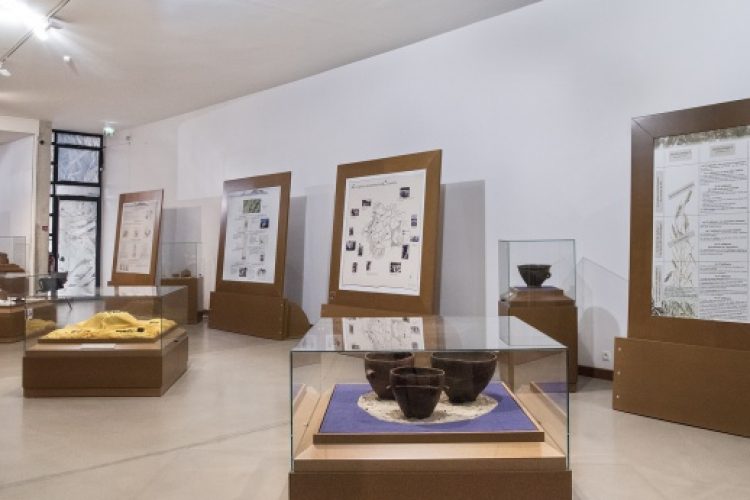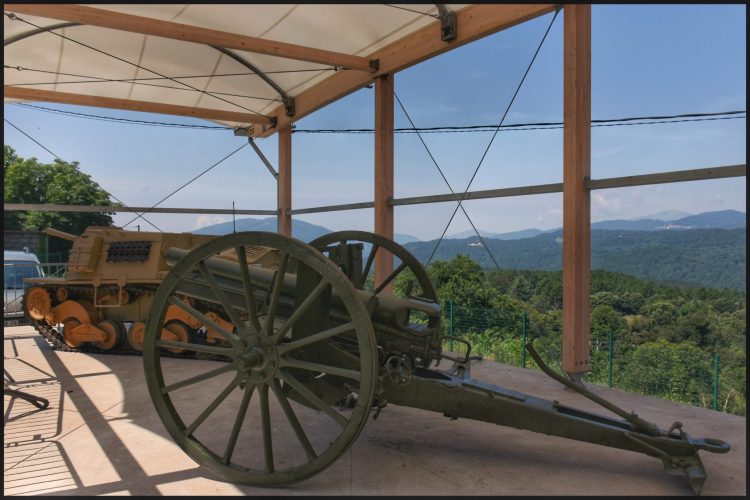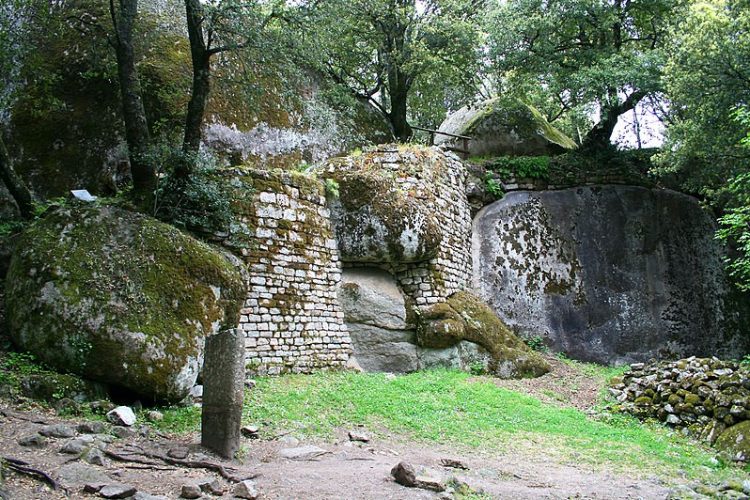The protohistoric fortification of Tappa stands on a rocky promontory detached from the secondary ridges of the Punta di a Caccia. Close to the Bronze Age sites of Ceccia and Bruschiccia, this castellu dominates the small valley of the Caniccione, a tributary of the Stabiacciu.
At its southern summit is a circular dry-stone "torra monument". This is a fairly traditional torra, with a circular chamber, orthogonally arranged diverticula, a straight corridor and an access ramp to the upper floor on the right. It is possible that another torra stood near the north summit. The rocky chaos is defended by several sections of dry-stone enclosure protecting an area where several dwellings with fireplaces have been found.
The Tappa site was excavated in 1960 and 1961 by Roger Grosjean. This work revealed occupation of the site during the Bronze Age, after an initial settlement during the second half of the Neolithic period.
Recent examination of the artefacts has clarified these chronological aspects, revealing construction, occupation and abandonment between the Middle Bronze Age and the Early Bronze Age, i.e. between 1900 and 1500 BC.






-scaled-q8dprcrdck3ggacqgwmc8fai5ok2v5jpnic3vm0efc.jpeg)









